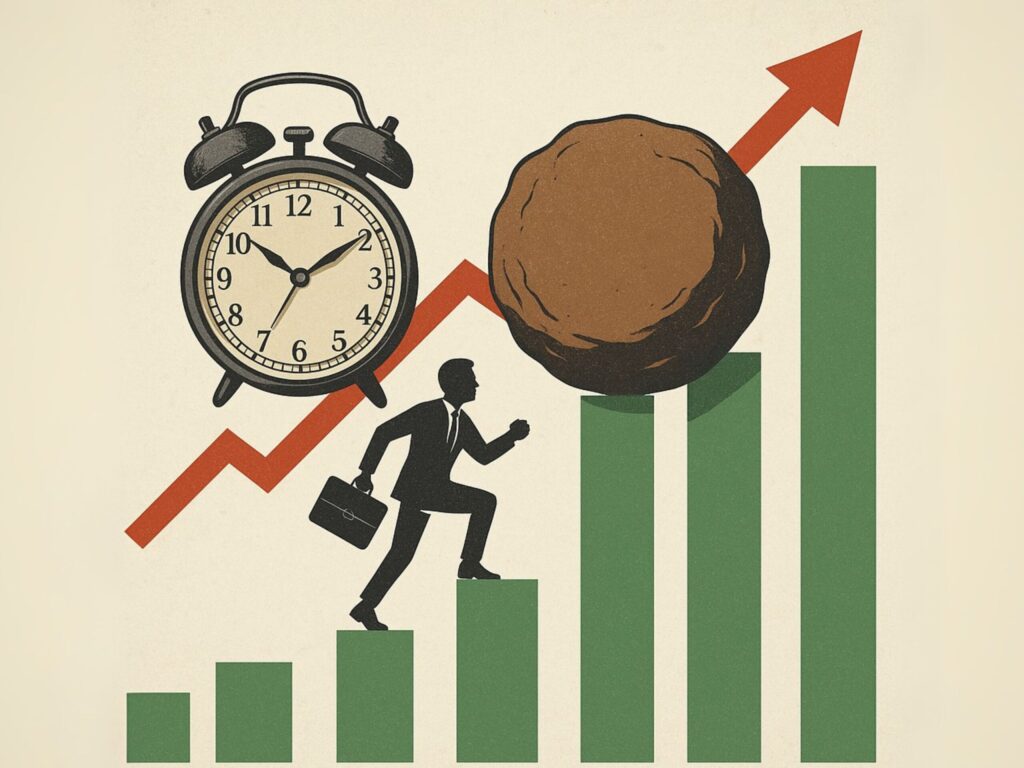Early-stage investing looks glamorous on LinkedIn, but the day-to-day reality is a grind of false starts, hard pivots, and decade-long timelines.
Wearing both the founder and investor hats has taught me that success hinges on three things: understanding why most investments fail, respecting timing at every stage, and spotting the subtle signals that say it’s time to sell.
Table of Contents
Common Obstacles in Early-Stage Investing (and How I Approach Them)
Failure is the default. Roughly nine out of ten companies I see won’t make it, so a one-check-a-year hobbyist strategy is just roulette in nicer clothes. Real diversification means writing dozens of checks, not one or two.
Volume isn’t enough without patience. New angels sometimes email me asking when to expect dividends; the honest answer is “not this decade.”
Early-stage companies and investments burn cash for years, and liquidity events—if they come—often land in year ten or fifteen.
It’s never about the business model. When you’re investing at the formation stage of a company, trying to evaluate the business model makes very little sense. The original pitch rarely survives first contact with the market.
Most startups pivot multiple times before finding a product-market fit. The initial idea investors back almost never resembles the final business that succeeds.
When making an early investment, you’re not underwriting a business model—you’re betting on a person.
Expectation-setting matters. I tell founders up front that my capital is personal, not pooled from outside LPs.
That aligns us: a 3× return in two years is great for me and life-changing for them. No one’s forced to swing for a mythical 500× home run.
The Importance of Timing in Investments: Lessons from My Own Ventures
0 → 1, 1 → 10, 10 → 100 are different sports.
Early on, I thrive on messy discovery; later stages demand forecasting, process, and people management—work that energizes some founders and drains others (myself included).
Knowing which phase excites you keeps both you and the company healthy. Mis-timed valuations kill exits. I’ve watched friends reject life-changing offers because VCs wanted bigger multiples.
A few years later, those same companies were overpriced, unprofitable, and effectively unsellable. Timing, not just growth, ultimately determines whether you win or lose.
The consequences of missing the right exit window can be brutal.
When companies eventually sell at a significant discount, investors typically recover their money through preference stacks, while founders who spent a decade building might walk away with almost nothing.
Even pocketing a million or two after taxes and years of effort often means they would have been financially better off simply taking a regular job during that time.
Markets move—founders must, too. The most successful companies I’ve seen weren’t those with perfect initial ideas but those that could pivot quickly when market signals changed.
I back founders who can read the clock and adapt rapidly, even if it means completely transforming their business model.
Knowing When It’s Time to Exit Your Investments
Energy is my north star. If I’m no longer intellectually lit up by the problems in front of me, it’s time to consider selling—no matter what the spreadsheet says. Burning out helps no one.
For me, the decision to exit comes down to two questions:
- Am I still energized by what I’m doing?
- Am I working on problems that mentally stimulate me?
As a business scales, the problems you face change dramatically. In the beginning, you’re focused on getting early customers, forming partnerships, and hiring your initial team.
Then you shift to managing people (which I personally don’t enjoy), building larger teams, and long-term forecasting.
Optionality beats obligation. Because my investors are myself, I can say yes when a “mere” 10× outcome appears. That flexibility prevents the valuation-creep trap that strands founders on an island of paper riches with zero buyers.
Watch for silent alarms. Rising customer-acquisition costs, investor misalignment, or a creeping dread of Monday morning all signal it’s time to explore exits before the window closes.
I’d rather leave some money on the table than wrestle with a tired company for another five years.
Finding Opportunities in Economic Uncertainty
I’ve learned that the best investment opportunities often emerge when nobody wants to invest. Usually, those moments are the most opportune times.
It’s true in the market too—when everything is in free fall, the people who remain calm and have cash are thinking, “This is the best time ever.”
Most people don’t think that way. When investing other people’s money, those people often say, “Things aren’t going well.
I don’t want my money going out during such uncertainty.” So VCs typically halt capital calls and slow down their investments.
But those are generally the most advantageous times. It’s all in retrospect, though.
When people look back five or ten years later, they say, “Yeah, that was the perfect time,” or “That was when this business became one of the most important companies in the world, but nobody really believed in it at the time.”
Key Takeaways
- Diversify aggressively—early-stage success is fundamentally a numbers game.
- Respect the clock—from market cycles to personal motivation, timing rules everything in business.
- Exit while you still love the chase—passion, not spreadsheets, tells you when it’s time to move on.

